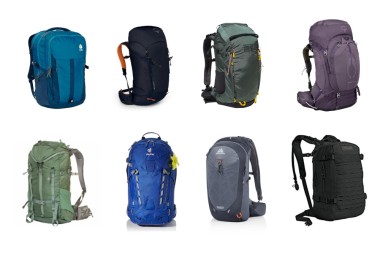The Classic Lumbar Pack, Refined
The lumbar pack for 30 years running, the new iteration of the Tour arrives with some 21st century refinements.
Configurations
The Tour TLS can be set up in three different configurations:
- Messenger bag
- Lumbar pack
- Backpack
Satchel/Small Messenger Bag
With the waistbelt stowed, the bag’s weight is born by the user’s shoulder/trapezius and cushioned via the generous shoulder strap pad. (Additional padding and a new diamond shape are updates to the new version of the pack.) The messenger set up for around town, camera bag, après ski, and light Every Day Carry (EDC) use. The new stretch table sleeve in the main compartment lends itself well here.
Lumbar Pack
With the waistbelt secured, the bag’s weight is born atop the user’s hips, and the (patented!) design makes for a comfortable and efficient fit. The shoulder strap can be optionally removed via unbuckling, though leaving it in place serves to stabilize the pack a bit, as in Fig. 4 below.
With the pack in lumbar mode the mesh waistbelt pockets—another of the new features on the updated model—can be put to use. They make for a great spot to stash a compass (as in Fig. 1 above), electronic devices (as in Fig. 4 above), and snacks (as in Fig. 1 above and Fig. 5 below). Caveat: if used to bust brush, the mesh is going to eventually suffer snags and tears.
Backpack
With the addition of the Mountainsmith Strapettes (sold separately), the Tour TLS converts into a compact backpack. Use of the Strapettes allows for the carry of heavier loads by shifting a portion of the pack’s weight off the user’s hips and onto the user’s shoulders, and for the carry of bulkier loads by stabilization of the pack. I have found the latter to be an even more valuable feature of the Strapettes than the former—when I have really stuffed the bag full and used the waistbelt and shoulder strap alone to bear the load, there has tended to be some pack sag while at rest and pack bounce while on the move. Both are minimized when I the Strapettes are employed. Front and back views of the Strapettes in use may be seen in Figs. 6 and 7 below. Attachment instructions are available via the Backcountry Edge video here.
External Pockets and Lash Points
The Tour TLS retains the two external storage design features from the previous iteration of the Mountainsmith Tour, one unchanged and one modified. Unchanged is the segment of shock/bungee cord loops through four common loops and secures and tightens via a toggle. A poncho, windbreaker, or light puffy layer stows nicely here. The twin side pockets have undergone modifications since the previous version of the pack. Their predecessors were partially made up of mesh and cinched at the top with a toggled segment of shock cord. The new pockets are made up entirely of ripstop polyamide with an elastic band sewn into the top. The new design trades capacity—it accommodates 20 ounce bottle very well, but 32 ounce bottles will not fit as they did with the previous version—for resiliancy—the ripstop stands up to briars and scree much better than the mesh of the previous version—and a lower profile—the elastic band sewn into the top of the new version pulls the pockets flat when not in use.
Internal Organization
The pack includes one undifferentiated outside pocket with a key fob, accessed via the single-pull zipper seen above the shock cord loop in Fig. 2 above, and a double-pull zipper accessed main compartment with the small hanging pocket seen in Fig. 9 below and the tablet sleeve seen in Fig. 3 above.
The Final Verdict
The Tour became the lumbar pack standard for a reason, and it maintains that position with the TLS update. It is easily capacious enough to fit liquids and extra layers to keep the user hydrated and warm for recreational snowshoe outings of two to three hours. It also makes for a great lift-served ski pack and summertime day pack. It works the charm for short three season family hikes, as a light EDC and travel pack, and for shopping trips.
Learn more about the history of Mountainsmith at their website. To purchase the Tour TLS, click here.












Leave a Comment